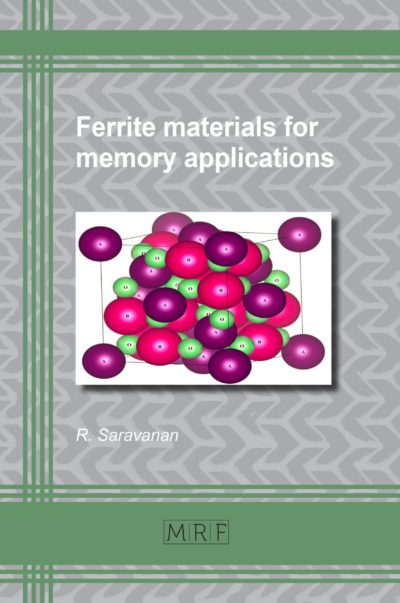Structural, Electronic and Optical Properties of 2D Monolayer and Bilayer CoO2
V.R. Patel, A.R. Patel, Yogesh Sonvane and P.B. Thakor
download PDFAbstract. In present study, structural, electronic, and optical absorption properties of two dimensional (2D) monolayer and bilayer CoO2 have been calculated by using the density functional theory. From the electronic band-structures of monolayer CoO2 and bilayer CoO2, these materials show metallic (conducting) behavior. The Optical absorption of monolayer and bilayer CoO2 begins from the infrared region to visible region and maximum absorption in ultraviolet region of the electromagnetic spectrum. Results suggest that the monolayer and bilayer CoO2 may be utilized for the optoelectronic applications and nano electronics.
Keywords
Monolayer, Bilayer, Electronic Properties, First-Principles Calculations, Optical Properties
Published online 3/25/2022, 5 pages
Copyright © 2022 by the author(s)
Published under license by Materials Research Forum LLC., Millersville PA, USA
Citation: V.R. Patel, A.R. Patel, Yogesh Sonvane and P.B. Thakor, Structural, Electronic and Optical Properties of 2D Monolayer and Bilayer CoO2, Materials Research Proceedings, Vol. 22, pp 35-39, 2022
DOI: https://doi.org/10.21741/9781644901878-6
The article was published as article 6 of the book Functional Materials and Applied Physics
![]() Content from this work may be used under the terms of the Creative Commons Attribution 3.0 licence. Any further distribution of this work must maintain attribution to the author(s) and the title of the work, journal citation and DOI.
Content from this work may be used under the terms of the Creative Commons Attribution 3.0 licence. Any further distribution of this work must maintain attribution to the author(s) and the title of the work, journal citation and DOI.
References
[1] M. Xu, T. Liang, M. Shi, H. Chen, Graphene-like two-dimensional materials, Chem. Rev. 113 (2013) 3766–3798. https://doi.org/10.1021/cr300263a
[2] C. Chowdhury, S. Karmakar, A. Datta, Monolayer Group IV-VI Monochalcogenides: Low-Dimensional Materials for Photocatalytic Water Splitting, J. Phys. Chem. C. 121 (2017) 7615–7624. https://doi.org/10.1021/acs.jpcc.6b12080
[3] G.G. Amatucci, J.M. Tarascon, L.C. Klein, CoO2, The End Member of the Li x CoO2 Solid Solution, J. Electrochem. Soc. 143 (1996) 1114–1123. https://doi.org/10.1149/1.1836594
[4] T. Motohashi, Y. Katsumata, T. Ono, R. Kanno, M. Karppinen, H. Yamauchi, Synthesis and Properties of CoO 2 , the x = 0 End Member of the Li x CoO 2 and Na x CoO 2 Systems. , Chem. Mater. 19 (2007) 5202–5202. https://doi.org/10.1021/cm702533v
[5] T. Motohashi, T. Ono, Y. Katsumata, R. Kanno, M. Karppinen, H. Yamauchi, Electrochemical synthesis and properties of CoO2, the x=0 phase of the AxCoO2 systems (A=Li,Na), J. Appl. Phys. 103 (2008). https://doi.org/10.1063/1.2828525
[6] M. Onoda, A. Sugawara, Stacking faults and metallic properties of triangular lattice CoO 2 with a three-layer structure, J. Phys. Condens. Matter. 20 (2008). https://doi.org/10.1088/0953-8984/20/17/175207
[7] K.W. Lee, W.E. Pickett, NaxCoO2 in the x→0 regime: Coupling of structure and correlation effects, Phys. Rev. B – Condens. Matter Mater. Phys. 72 (2005) 1–7. https://doi.org/10.1103/PhysRevB.72.115110
[8] E.B. Isaacs, C.A. Marianetti, Compositional phase stability of correlated electron materials within DFT+DMFT, Phys. Rev. B. 102 (2020) 1–11. https://doi.org/10.1103/PhysRevB.102.045146
[9] H. Kang, J. Lee, T. Rodgers, J.H. Shim, S. Lee, Electrical Conductivity of Delithiated Lithium Cobalt Oxides: Conductive Atomic Force Microscopy and Density Functional Theory Study, J. Phys. Chem. C. 123 (2019) 17703–17710. https://doi.org/10.1021/acs.jpcc.9b03232
[10] M. Ranjbar, Thermal decompose method for synthesis and characterization of CoO2/GrO nanostructures and optical investigation, J. Mater. Sci. Mater. Electron. 27 (2016) 11707–11712. https://doi.org/10.1007/s10854-016-5307-6
[11] P. Giannozzi, S. Baroni, N. Bonini, M. Calandra, R. Car, C. Cavazzoni, D. Ceresoli, G.L. Chiarotti, M. Cococcioni, I. Dabo, A. Dal Corso, S. De Gironcoli, S. Fabris, G. Fratesi, R. Gebauer, U. Gerstmann, C. Gougoussis, A. Kokalj, M. Lazzeri, L. Martin-Samos, N. Marzari, F. Mauri, R. Mazzarello, S. Paolini, A. Pasquarello, L. Paulatto, C. Sbraccia, S. Scandolo, G. Sclauzero, A.P. Seitsonen, A. Smogunov, P. Umari, R.M. Wentzcovitch, QUANTUM ESPRESSO: A modular and open-source software project for quantum simulations of materials, J. Phys. Condens. Matter. 21 (2009). https://doi.org/10.1088/0953-8984/21/39/395502
[12] J.P. Perdew, K. Burke, M. Ernzerhof, Generalized Gradient Approximation Made Simple, Phys. Rev. Lett. 77 (1996) 3865–3868. https://doi.org/10.1103/PhysRevLett.77.3865
[13] H.J. Monkhorst, J.D. Pack, Special points for Brillouin-zone integrations, Phys. Rev. B. 13 (1976) 5188–5192. https://doi.org/10.1103/PhysRevB.13.5188
[14] K. Momma, F. Izumi, VESTA 3 for three-dimensional visualization of crystal, volumetric and morphology data, J. Appl. Crystallogr. 44 (2011) 1272–1276. https://doi.org/10.1107/S0021889811038970
[15] D.L. Nguyen, C.R. Hsing, C.M. Wei, Theoretical prediction of superconductivity in monolayer CoO2, Nanoscale. 11 (2019) 17052–17057. https://doi.org/10.1039/C9NR03954F
































